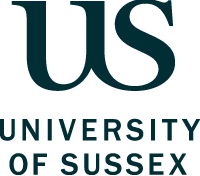The ICTM-group was established in 2012 at the University of Sussex by Matthias Keller with the intention to investigate and employ the interaction of ions and light and ions with atoms and molecules.
This project unites two distinct areas of quantum information processing: single ions stored in radio-frequency traps and single photons in optical fibres. Both fields have seen spectacular advances in recent years. Strings of ions are presently the most successful implementation of quantum computing, with elementary quantum algorithms and quantum simulations realised. Photons, on the other hand are used to distribute entanglement over ever increasing distances.
The principal challenge in the field is to enhance quantum processing power by scaling up current devices to larger quantum systems. We are pursuing one of the most promising strategies, distributed quantum computation, in which multiple small-scale ion processors are interlinked by exchanging photonic quantum bits via optical fibres. This requires novel ion trap structures that facilitate high-performance quantum computation and a photonic interconnect for networking. The Ion Trap Cavity-QED and Molecular Physics group in Sussex has a leading role in this field.
About the project:
The aim of this project is to use an existing ion-cavity system to investigate the interaction of a multi-species ion crystal with an optical cavity. In our experiment, we use calcium and strontium ions.
In the first stage, the strontium ions are used to sympathetically cool the calcium ions while stimulated to generate entanglement between the internal state and the state of a cavity photon. In the next stage, the entanglement between the calcium ion and the photon will be transferred to the strontium ion. This is a crucial process in a scalable quantum computer and this project will aim to demonstrate this process for the first time.
Skills and training:
An important part of this PhD project is skills development and training. Local training through lecture courses, transferable skills training modules and practical training in the laboratory will be complemented by SEPNet wide training events. These include workshops and training schools.
Eligibility
Applicants must hold, or expect to hold, at least a UK upper second class degree (or non-UK equivalent qualification) in Physics, or a closely-related area, or else a lower second class degree followed by a relevant Master's degree.
How to apply
Apply through the University of Sussex on-line system.
https://www.sussex.ac.uk/study/phd/apply/log-into-account
Select the PhD in Physics, with an entry date of September 2022.
In the Finance & Fees section, state that you wish to be considered for studentship no ITCM/2022/01
We advise early application as the position will be filled as soon as a suitable applicant can be found.
Due to the high volume of applications received, you may only hear from us if your application is successful.
This award is open to International and UK students.

 Continue with Facebook
Continue with Facebook



